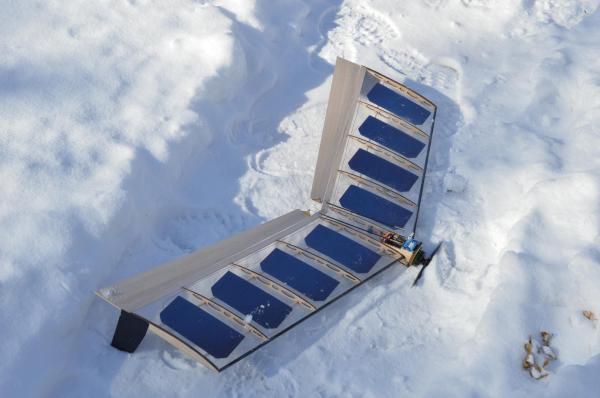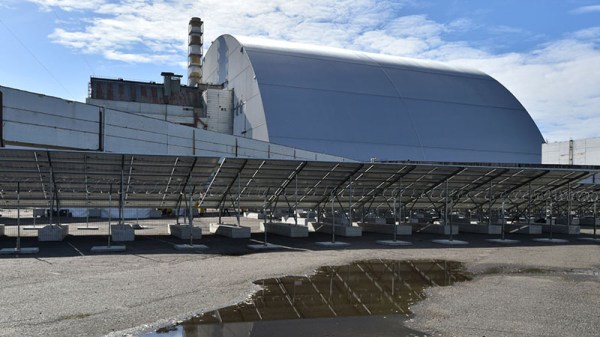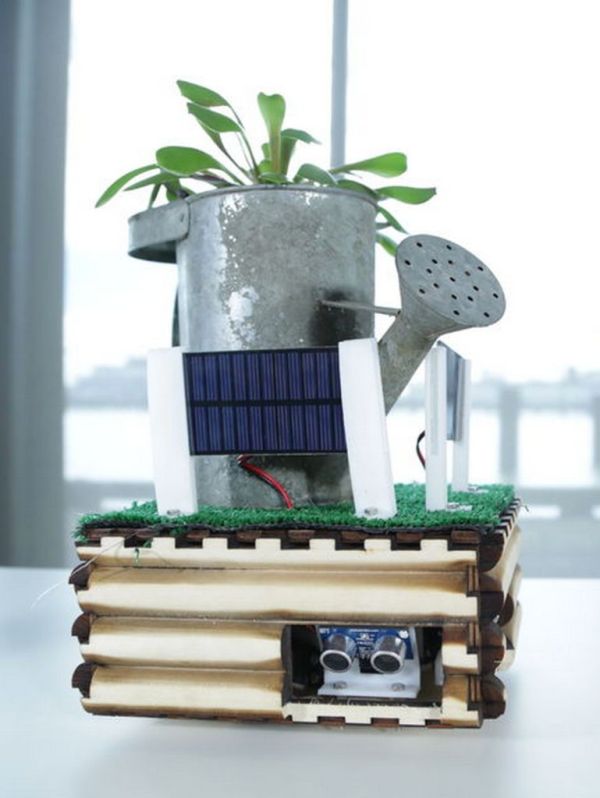Flying on the power of the sun is definitely not a new idea, but it usually involves a battery between the solar panels and the propulsion system. [ukanduit] decided to lose the battery completely and control the speed of the motor with the output of the solar panels. This leads to some interesting flying characteristics, almost akin to sailing.
When a load tries to draw more current than a solar panel can provide, its output falls dramatically, so [ukanduit] had to take this into account. Using a ATTiny85, he built a MPPT (Maximum Power Point Tracker) unit that connects between the RC receiver and the motor speed controller. It monitors the output of the panels and modulates the speed of the motor accordingly, while ensuring that there is always enough power to run the servos and receiver. The airframe (named the Solar Bear) is a small lightweight flying wing, with a balsa and carbon fibre frame covered with clear film, with the solar cells housed inside the wing. Since the thrust of the motor is directly proportional to how much sunlight hits the top of wings, it requires the pilot to “tack” against the sun and use momentum to quickly get through turns before orienting into the sun again.
If you want to build your own controller, the schematics and software is up on RC Groups. Check out the Solar Bear in action, flown here by [AJWoods].









 This project is
This project is 









